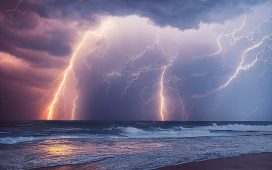Botanists have identified 33 “dark spots” around the world where thousands of plant species are probably waiting to be discovered, according to new research.
From a palm tree in Borneo that flowers underground to a Malagasy orchid that spends its life growing on other plants, researchers are still making dozens of new species discoveries every year.
But with more than 100,000 plant species believed to be undiscovered, the majority of which are believed to be at risk of extinction, a new project led by Kew’s Royal Botanic Gardens is highlighting parts of the world where botanists should be concentrating their search.
From Madagascar to Bolivia, scientists have identified the areas of plant diversity in an effort to turbocharge identification. The study, published in the journal New Phytologist, builds on analysis by researchers at Kew last year that found that three-quarters of all undescribed plant species were likely to be threatened with extinction.
Scientists believe the unknown species could hold clues to future drug discoveries, fuels or other innovations.
Prof Alexandre Antonelli, director of science at Kew and senior author of the paper, said the research was aimed at helping to better target conservation and speed up the rate of plant discoveries, warning that many species would become extinct before they were ever known to science at the current rate of identification.
“We are protecting 30% of the planet by this decade under current UN targets – but we don’t know which areas to protect unless we have the right information,” Antonelli said.
“Previous research has shown that biologists haven’t been particularly efficient in documenting biodiversity. We’ve gone back to the same places over and over again and we’ve neglected some areas that may contain lots of species,” he said.
Most of the regions are in Asia, which has 22 areas listed as in need of further research, including the island of Sumatra, the eastern Himalayas, Assam in India, and Vietnam. In Africa, Madagascar and South Africa’s Cape provinces were identified, while Colombia, Peru and south-eastern Brazil were areas highlighted in South America.
Almost all of the areas overlap with areas that have already been identified as biodiversity “hotspots” – areas of the planet that are rich in life but are threatened with destruction.
Dr Samuel Pironon, a biology lecturer at Queen Mary University of London, an honorary research associate at Kew and a lead author of the paper, said: “All countries have agreed to preserve and restore biodiversity, including plant biodiversity. How do we do this if we don’t know what species we are talking about or what the biodiversity is and where we can restore it?”
Many of the countries where these dark spots occur have limited capacity for formal species identification and the researchers said they hoped the analysis would inspire future collaborations between research institutions and local people around the world.
The scientists warned that members of the public should not collect species themselves due to strict international laws on moving biodiversity around the planet, as well as potentially threatening the survival of species, but said taking photographs of plants in these areas and sharing them on citizen science platforms could help.
Pironon said: “It’s a great opportunity to strengthen partnerships between scientists and citizens, because platforms like iNaturalist rely on both. People take photos of things they think my be interesting to the rest of the world, and scientists are key because they help identify those species.”
Next month, governments will meet at the Cop16 biodiversity summit in Cali, Colombia, for the first time since they agreed in 2022 on targets to prevent the loss of life on Earth this decade.










